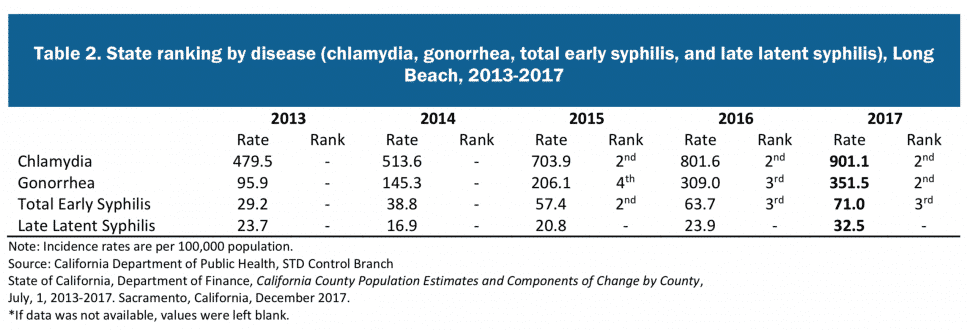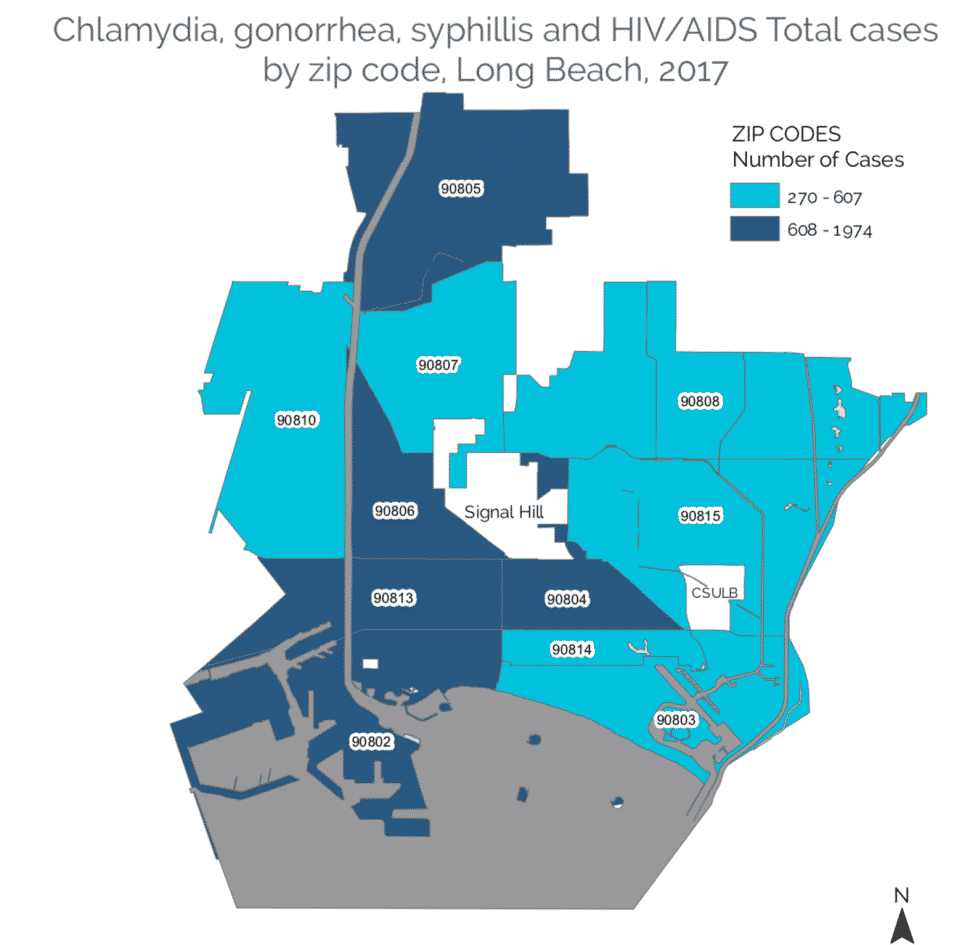In 2017, Long Beach saw 4,321 cases of chlamydia and 1,690 cases of gonorrhea, marking the second highest rates in California. For syphilis, the city saw 499 cases—the third highest rate in the state.
Over the past five years, Long Beach has seen a dramatic increase in rates of sexually transmitted diseases, mirroring a nationwide trend of record jumps in cases of syphilis, gonorrhea and chlamydia.
In an effort to reverse those trends, the city on Monday announced a comprehensive health strategy aimed at reducing HIV and STD infections by the year 2022 through education, increased testing and expansion of healthcare programs.
In a news conference at St. Mary Medical Center on Monday, Mayor Robert Garcia noted that while the number of new HIV cases has plateaued, Long Beach still has higher rates than both the state and county. It’s an issue that’s alarming to him not only as a mayor, but as a gay man, he said.
“We know that this is unacceptable and we can do something about it,” he said.
In addition to details of the new plan, the city also released a report providing a snapshot of STD rates and demographics.

Key takeaways include:
- Gonorrhea increased by 267% from 2013 through 2017. Of the cases, 67% were male and 38% were African American. The plan includes targeted community outreach to address the disparities in STD rates by race, ethnicity and socioeconomic status.
- Chlamydia is a larger problem among females. The disease increased by 88%, and of those cases, 60% were female.
- Syphilis has increased by 143%. Men who have sex with men comprised 67% of those cases, but the city in the past three years has seen an increase in women who are infected. This is especially concerning because pregnant women can pass the disease to their unborn child.
- As of 2017, 4,520 Long Beach residents were diagnosed and living with HIV, and an estimated 730 people are undiagnosed. Although the number of new HIV diagnoses dropped by 33% overall, the rate of new infections in Long Beach (26 per 100,000) remains higher than the county (19 per 100,000) and state (13 per 100,000).

While it’s tough to pinpoint an exact cause of the increase, City Health Officer Dr. Anissa Davis said Long Beach sees higher rates in part because it is a dense, urban city with a large gay population. Gay men have historically seen higher STD rates compared to other groups.
Michael Buitron, a coordinator with the CARE Clinic HIV program at St. Mary, said he saw STD rates increase after many STD-testing clinics closed following the rollout of Obamacare. While more people now have health insurance, some might be reluctant to visit their family doctor for an STD test, he said.
Buitron said the new plan includes expanded access and educational outreach for “PrEP and PEP,” which has been shown to be effective in reducing HIV rates. PrEP, short for pre-exposure prophylaxis, is taken before exposure to reduce HIV risk, while in PEP, short for post-exposure prophylaxis, is taken within 72 hours after exposure and has been show to prevent HIV infection.
“Trying to change people’s behavior hasn’t been effective, but biomedical intervention is effective,” said Buitron, a PrEP and PEP coordinator.
The city has identified five main goals:
- Reduce HIV and STD infections through strategies including mobile testing units and targeted outreach.
- Strengthen capacity to address HIV and STDs through more training for health care workers and identifying an additional $2 million in funding through federal, state and county partnerships.
- Education through community partnerships and campaigns.
- Increase access for care including improved reporting and better coordination among health care providers.
- Expand PrEP and PEP access.
“Our STD and HIV infection rates need to be taken seriously and approached with care and support from our Long Beach community,” Garcia said. “Our goals to reduce HIV infections by 50% and STD infections by 20% are possible, and we will ensure that we have the resources in place to support these efforts.”

